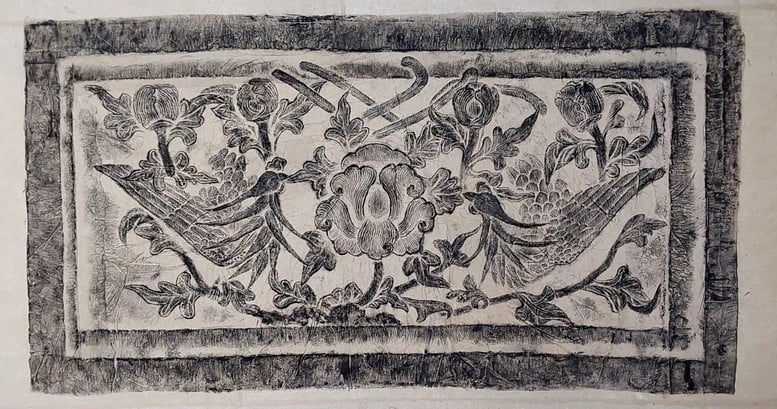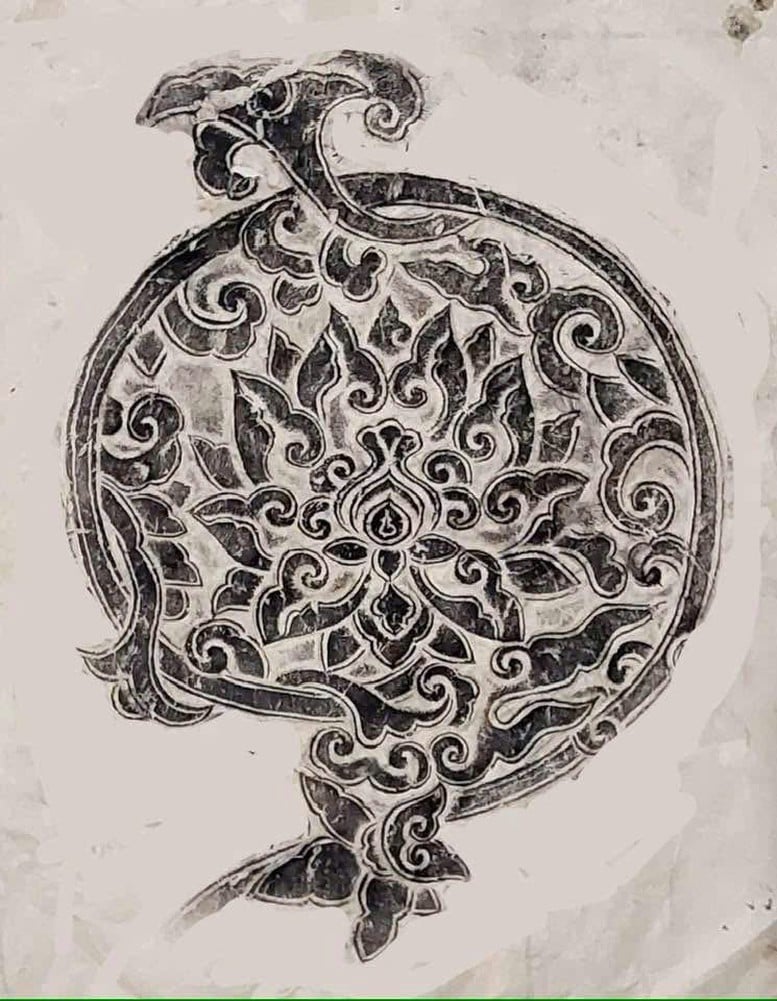
Patterns – the link between heritage and contemporary creativity
More than a century ago, along with French research trips, the technique of making patterns appeared in Vietnam. The initial purpose was very simple: To create faithful 1/1 scale prints from stele inscriptions, helping researchers continue to analyze them after leaving the site. Thanks to that, the French School of the Far East (EFEO) left behind a huge archive of stele inscriptions - today still a valuable source of data for historians, fine arts and heritage conservation. But the value of patterns does not lie only in the function of storing information. When applied to fine arts research, especially since the 1960s at the Institute of Fine Arts and later in the training of the Faculty of Theory, History and Criticism of Fine Arts (Vietnam University of Fine Arts), patterns became a "magnifying glass" that magnified the quintessence of ancient patterns and motifs. The carvings on stone, the carvings on wood or the ceramic patterns appeared sharply, as if the observer were standing in the space hundreds of years ago.

For art students, patterns are not only practical exercises, but also a dialogue with the hands and minds of ancient craftsmen. In each hammer stroke, each carving, they can read the aesthetic thinking, manual skills and cultural implications that their ancestors conveyed. From there, patterns become the starting point for new creations: many ancient motifs are revived in applied design, contemporary art, and even in creative industrial products.
The exhibition “Patterns in Art Research and Creation” held on August 18, 2025 at the Museum of the Vietnam University of Fine Arts on the occasion of the 100th anniversary of the Vietnam University of Fine Arts and the 47th anniversary of the establishment of the Faculty of Art Theory, History and Criticism, is a vivid slice of that flow. The 50 patterns introduced are the result of many generations of lecturers, students and graduate students, not only as scientific documents, but also as independent works of art, carrying both historical depth and visual beauty.
The pattern, therefore, is not just a “copy” of heritage, but a record of emotions and knowledge, a means for the past to converse with the present, so that heritage becomes the creative source of Vietnamese fine arts today.
Source: https://baolangson.vn/ban-rap-dau-noi-giua-di-san-va-sang-tao-duong-dai-5056447.html






























![[Photo] An Phu intersection project connecting Ho Chi Minh City-Long Thanh-Dau Giay expressway behind schedule](https://vstatic.vietnam.vn/vietnam/resource/IMAGE/2025/8/21/1ad80e9dd8944150bb72e6c49ecc7e08)
































![[Photo] Politburo works with the Standing Committee of Hanoi Party Committee and Ho Chi Minh City Party Committee](https://vstatic.vietnam.vn/vietnam/resource/IMAGE/2025/8/21/4f3460337a6045e7847d50d38704355d)
































Comment (0)